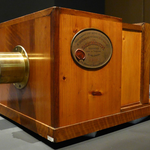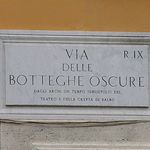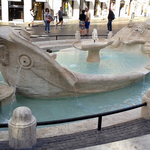Isola Tiberina
Isola Tiberina
It is a low-seated and stretched small island (about 300 by 80 meters)
which rises in the Tevere between the Garibaldi and Palatine bridges.
It attracted the Romans' fantasy that interwove several legends
about it.
Its form reminds a big boat. It is connected according to a
legend to the shipwreck. In the past the ship was underlined
by the travertine laying.The remarkable remains are left from it.
The sacred image of the watercraft had an obelisk in the middle
representing a mainmast. While according to other legends the
origin of an island was due to the accumulation of the mud
on the grain of Tarquinius which was thrown into the river
by the people after the tsar was caught.
In 289 BC the island was dedicated to the cult of Aesculapius,
god of the medical art. Today on its place one can see a temple
of the San Bartolomeo church built up by Ottone III, reconstructed
again between the end of '500 and the beginning of '600.
That's why the island is commonly called di San Bartolomeo
(San Bartolomeo island).
According to a legend at the dawn of an August day in 293 a
Roman ship went up again along the banks of the Tevere with a
precious load aboard. It was an amphora containing a snake
that the consul Oguino had stolen from the temple of Aesculapius,
god of the medicine. The temple rose up in the ancient greek Epidaurus town.
After the ship had arrived to the last bandage between the Aventino
and Trastevere, the snake went out of the amphora and to the
astonishment of Romans slept into the river, crossed it and went to
hide between the cane-brakes of the island. Rather than a bad sign
the thing was interpreted as a divine sign: here should be a place
where Aesculapius wanted his temple. On the bas-relief of the side
of the island the Aesculapius snake still can be seen.
According to the Romans the snake, a live symbol of the god was
the last hope to free them from the plague. Therefore after the consultation
with the Sibyl Books the Asclepius cult was introduced. Here a
temple of Aesculapius was built up, flocked by the sickmen to be
cured by the healing god. The vocation to receive the
invalids lasted for the centuries. It was turned into
lazar-house during the plague of 1656. Nowadays it is transformed
into the hospital of the Fatebenefratelli built in 1584.
The hospital is considered to be one of the most ancient
hospitals of the world.
The left bank of the island is linked to the land by the Ponte
Fabricio (62 B.C). It is the most ancient bridge in Rome after
Ponte Milvio, with the hermae quadrifrons at four ends. That's why
it was called Four Heads or Jewish bridge because the Hebrews were
crossing it to return to the ghetto. The right bank is linked to
Trastevere
district through the ponte Cestio (I A.C century ) restored in
370 A.C. and reconstructed again in 800 keeping only the central arcade
from the antiquity.

 The records of Rome. Big numbers, not always enviable, for a big city.
The records of Rome. Big numbers, not always enviable, for a big city. New Phot-O-Matic section. To spend some time looking at photos (also) of Rome.
New Phot-O-Matic section. To spend some time looking at photos (also) of Rome. The administrative, urban, toponymic and imaginative subdivisions of Rome.
The administrative, urban, toponymic and imaginative subdivisions of Rome. Notice for tourists: in Rome you drink for free. Historical fountains and 'big noses'.
Notice for tourists: in Rome you drink for free. Historical fountains and 'big noses'. Free museums return on the first Sunday of the month.
Free museums return on the first Sunday of the month.